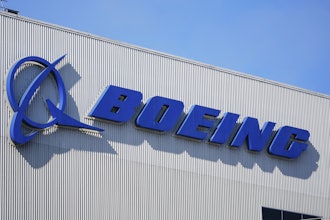The first step in the process must be that of culling from the long list of suppliers those that are truly of strategic importance. In experience after experience, we’ve found that the list of truly strategic suppliers is short, even for Fortune 100 firms. There may be many ingredients for which it is important to ensure security of supply, but most likely there are only a few instances in which establishing a strategic relationship with a supplier is the right route to that goal.
In CoDestiny [1], we provide a framework for identifying which of a firm’s suppliers are of strategic importance. Some suppliers achieve that stature as a result of their significance to the company’s strategy and operations. Others achieve it as a result of the importance placed on the supplier’s ingredient by the customer’s customers — the organizations in later stages of the customer chain. A few suppliers score highly on both of these dimensions. Among the metrics that goes into the assessment of a supplier’s strategic importance are ones that assess the implications of supply disruptions, the availability of alternatives to the ingredients sourced from that supplier, and the impact on margins from price increases associated with such ingredients.
These factors are important, but no more so that other elements of the assessment. The increased attention of C-Level executives on the supply chain creates an opportunity for a comprehensive determination of which suppliers are strategically important. Supply chain executives should take advantage of this period of heightened attention to review suppliers and implement new relationship plans for those which make it onto the leaderboard in terms of strategic importance.
For the suppliers determined to be strategically important, the objective of the supply chain organization should be to motivate stronger and stronger contributions from those suppliers along the metrics that make them strategically important. In most instances, those metrics involve contributions that go far beyond the cost of their products and services or their ability to ensure an ongoing stream of on-time, in-full deliveries.
The examples that have emerged as to the strategic contributions of suppliers span many dimensions. We have seen suppliers whose contributions are critical to their customer’s ability to shorten product development cycles and get new products to market quickly. We have seen suppliers that have helped their customers achieve breakout gains in energy efficiency and others who have enabled their customers to meet new environmental targets. We have seen still other suppliers play a vital role in helping their customers to successfully enter a new geographic market with unique requirements due to regulation, culture, or other factors. The list of contributions that involve factors other than product cost or security of supply is nearly endless, and it is in fact a rare corporation whose executives are unable to tell a “supplier success story” in which a supplier contribution made a major difference to the customer’s market position and profitability.
Unleashing the creativity of strategic suppliers challenges many firms. One reason is that the majority of suppliers are not strategic, and the processes that have been developed to manage these relationships are often inconsistent with motivating collaboration by strategic suppliers. Such processes often involve arms-length relationships, active efforts to bring competitors to the table, and “information hoarding” on the part of the customer organization. None of these fall into the category of best customer practices linked to managing strategic supplier relationships. So it often takes a new and unfamiliar approach by the supply chain organization to take strategic supplier relationships to a higher level. This reality is another reason why the “All In” approach must only be implemented with a carefully selected group of suppliers, those where an investment in a new approach to the relationship is likely to yield major rewards for the company’s shareholders.
The “All In” approach to the relationship with selected strategic suppliers is not a business-as-usual recommendation. Asking for more from suppliers, and getting it, poses some very real challenges that will task both of the organizations involved in the supplier-customer relationship. The reason is that reaching a new, higher level of contribution from suppliers will require new modes of behavior and a new focus to many relationships.
Best practice approaches to strategic supplier relationships offer tremendous potential. One of the most effective such practices involves taking a broader view of the supplier’s impacts on the customer organization. As part of various consulting projects, we’ve systematically mapped the way a supplier’s product connects to the customer’s operations and processes, trying to identify and quantify the “adjacency costs” that are connected to the supplier’s product. In many instances, this mapping process has uncovered the reality that the adjacency costs are substantially larger than the price paid for the supplier’s product itself.
Such adjacency costs fall in many categories, depending on the industry and processes involved. Some of them are obvious — logistics costs, inventory costs, etc. Others are also rather straightforward to identify and quantify — the manufacturing costs tied to use of the supplier’s product and the quality control process costs associated with the supplier’s product are examples in this regard. Still other adjacency costs are a bit further removed — warranty and post-sale service costs linked to the supplier’s product are examples in this regard.
It sometimes takes imagination and hard work to trace all of the adjacency costs associated with a supplier’s product, but the rewards can be substantial. For when these costs are understood, they provide a basis for a collaborative effort on the part of the supplier and the customer to find ways to “take these costs out”. This approach also creates a meaningful statement to the supplier that the relationship is not business as usual, but that the customer organization is willing to put meaning to their statement of moving to an “All In” relationship.
The opportunity generates excitement on the part of suppliers. In one interview, a supplier commented that “We’ve been working for over a decade with this customer to try to find ways to continue to reduce the cost of a $10 component they buy from us. Now we are working with them to find out how to achieve savings in a $200 bundle of adjacency costs. For the first time in a long while, I think we can make some major contribution.” The perspective contained in this supplier’s comment underscores the benefits to the customer that can be realized. They make it clear that “All In” relationships are two-way commitments, and the supplier that wants to sustain a strategic relationship has a responsibility to bring value to the customer.
Often an immediate reaction to this concept is that the responsibility to manage these adjacency costs lies with the customer, not the supplier. The evidence is that such thinking is shortsighted. Often, the changes that are required to reduce at least some of the adjacency costs must be taken by the supplier, and in many instances, the insight and knowhow to identify such possibilities lies with the supplier more so than with the customer. In project work, we frequently see a supplier tell their customer that “We’ve seen that before in another application, and here’s what we can do to solve the problem”. It’s always true that a greater level of optimization is possible when a full system perspective is taken, and this is one of those instances. Involving the supplier in collaboration to reduce adjacency costs is just good business. It opens the door for greater contributions.
Summary
Ensuring security of supply will challenge most businesses over the next few years. It will require an evaluation of which suppliers are truly strategic, and which are not, with security of supply one among the factors that enter into that determination. Taking that step opens the potential to elevate strategic relationships to an even higher level, solving not only the problem of security of supply, but also asking strategic suppliers to themselves go “All In” and begin to take actions that can contribute to ongoing growth and profitability for years to come. The payoff for both organizations from such a fresh approach to the supplier-customer relationship can be enormous.
George F. Brown, Jr. is one of the founders and CEO of Blue Canyon Partners, Inc. He brings to his clients extensive experience and unique perspectives about growth strategy in business and government markets. In recent years, he has helped clients develop and implement strategies to achieve global market presence and reach decisions relating to segmentation strategies, pricing, channel management, and major customer relationship management. He is the coauthor of CoDestiny: Overcome Your Growth Challenges by Helping Your Customers Overcome Theirs, published by Greenleaf Book Group Press of Austin, TX in 2010. In addition, his work on business-to-business strategy has resulted in over one hundred other publications in various professional journals over the past decade. George earned a B.S. in Administration and Management Science, an M.S. in Industrial Administration, and a Ph.D. in Economics, all from Carnegie-Mellon University, Pittsburgh, PA, where he was awarded the Alexander Henderson Award in Economic Theory.


















